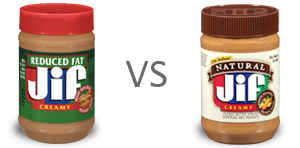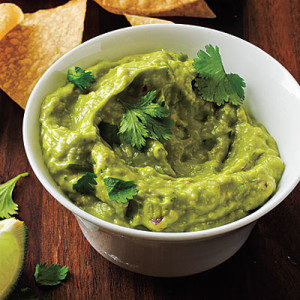A common misconception among dieters is that fat free foods are good for you. This couldn’t be farther from the truth! If you’ve ever read the label of a fat free or fat reduced food, then you know that awful substitutes are used to accomplish the lower number of calories. Fat is replaced with sodium, sugar, and carbohydrates.
According to numerous medical studies, fat free foods:
- Interfere with the body’s ability to regulate fat storage and metabolism. Artificial ingredients confuse the natural processes of the body and make it difficult to stabilize how fat is used and stored.
- Increase our appetites. Our bodies need a minimal amount of fat to survive and operate. Think of fat as a fuel – we need enough to sustain our bodies with energy, but not too much or it’s stored as body fat. So when we remove this fuel from our diets with fat free foods, our bodies are searching for more sources of energy. This makes us hungrier and hungrier, and we eat more foods as a result.
- Confuse the metabolic process. Since these processed foods distract the body’s ability to digest and metabolize food, we retain more from what we eat, thereby resulting in weight gain.
As these studies have shown, it’s better to taste more and consume more calories with real foods than it is to replace them with artificial substitutes. Remember, not all calories are created equal. While many diets focus on the number of calories consumed, the more important consideration is to focus on the quality of calories consumed.
Another major misconception is that fat free foods are synonymous with low calorie foods. This is why so many people watching their intake of fat calories struggle to lose weight. The proportion of fat calories to “normal” calories is of little consequence if the overall count is high and the food quality is poor. Again, it’s natural for all food to have at least some percentage of fat calories. Low or no fat means that the food has been unnaturally processed to modify its composition.
What does this mean? It means that extra sugar, sweeteners, and simple carbs have been added to make up for the lack of fat calories. These elements aren’t only enemies of your diet plan, but are high in calories as well. What has essentially happened is that fat calories are removed only to be replaced with even more calories that are allegedly better because there isn’t any fat. But remember that in terms of dieting, a calorie is still a calorie. Kind of defeats the purpose of eliminating fat calories, right?
The worst part is that eliminating fat calories means that flavor has been eliminated as well. To add back the lost flavor, processed junk, sugar, MSG, and carbs are added to the ingredient list to make it taste better. These ingredients mess with our metabolic process and are just flat-out unhealthy in general. In other words, low or no fat foods don’t necessarily equate to low calorie foods – and it certainly doesn’t equate to healthy foods.
This means that you can enjoy full fat, natural foods as long as you eat them in moderation. Go enjoy that steak you’ve been craving and don’t be afraid to have fun at the neighborhood picnic! Focus on naturally low fat foods (fruits and veggies) and foods with healthy fats like fish, eggs, and avocado (to name just a few). It’s always better to moderate real food consumption than rely heavily on processed fats and foods.
Click here for Part 1 – Why Diet Sodas Aren’t Really Diet
Click here for Part 3 – How Convenience Foods Make You Fat
Want to jump start your weight loss plan? Try our 60% HCA Garcinia Cambogia HP for a super convenient (only 2 capsules per day) way to boost your weight loss!



Hello , you are awsome writer, i love naturessymbiotics.com
I’m not sure where you’re getting your info, but good topic.
I needs to spend some time learning more or understanding more.
Thanks for magnificent information I was looking for this info for my mission.
Pingback: Benefits to Eating Healthy | For the Love of Dairy | Nature's Symbiotics
Pingback: URL